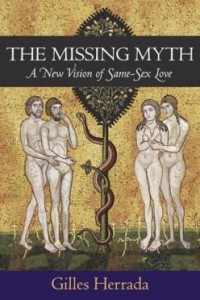 The Missing Myth: A New Vision of Same-Sex Love
The Missing Myth: A New Vision of Same-Sex Love
by Gilles Herrada
SelectBooks.
366 pages, $19.95
HOMOSEXUALITY is almost always treated as a mystery and an issue of contention. Why isn’t it just a fact of human life, like red-headedness or left-handedness? Why do we even have to ask where it comes from or what gives rise to it? Is it learned, genetic, or hormonal? Is it caused by structures in the brain or quirks and traumas of psychological development, a result of evolution? These familiar questions provide the context for Gilles Herrada’s wide-ranging discussion of current scientific discoveries and socio-cultural dynamics.
Herrada is a molecular neurobiologist, a specialist in the genetics of pheromones turned philosopher and Renaissance Man asking some big questions about science, human meaning, and the nature of consciousness. This book really is a kind of gay “theory of everything,” an exposition of how an array of factors—science, religion, psychology, gay culture, gay sex, pheromones, queer theory, sodomites, sexologists, gay liberation, and love—fit together into the “new vision” referred to in the subtitle.
Herrada is French but now lives in New York City. His important influences include Michel Foucault and Ken Wilber, along with Joseph Campbell and Pierre Teilhard de Chardin. The influence of Wilber’s “Integral Approach” shows in the book’s division into the “big three” conversations: “the true,” “the good,” and “the beautiful.” Like Wilber, Herrada intends to integrate as many elements of human reality as possible into the vision he presents. The Missing Myth sets out to report on the latest science and to offer a satisfying theory of homosexual etiology grounded in molecular biology, and it goes on to address history, culture, religion, myth, meaning, politics, and activism in search of the “new vision.”






